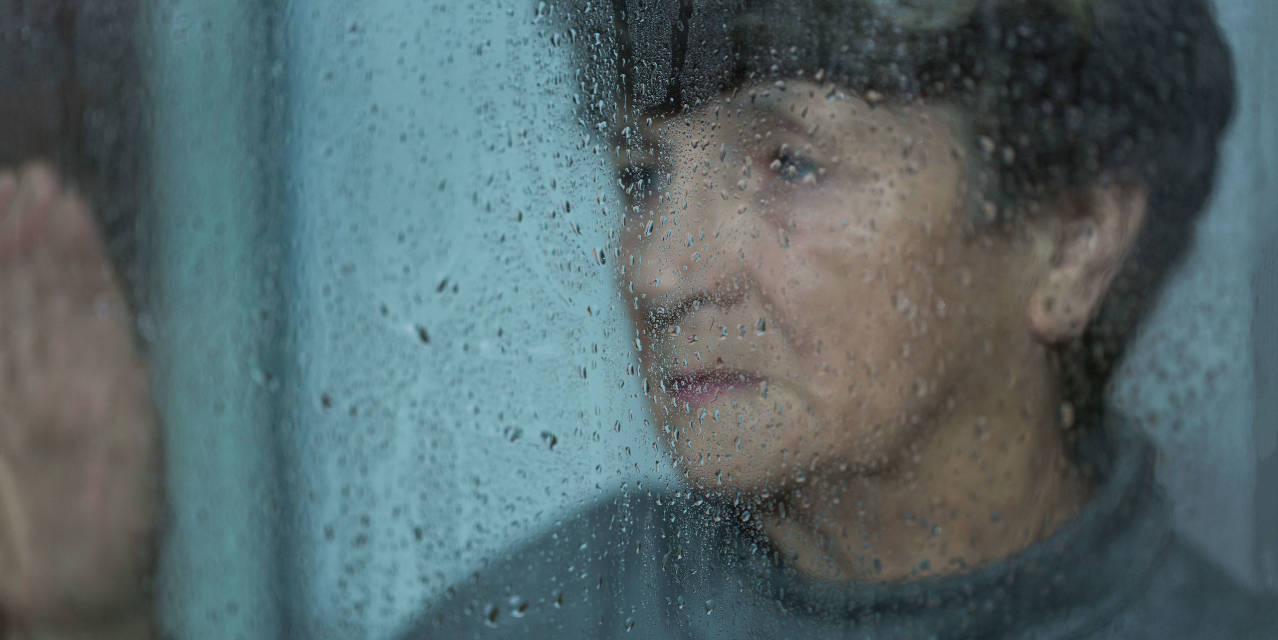By Steve Moran
There was an article in the Wall Street Journal on June 5, 2020, titled “My Benevolent Incarceration in a New Jersey Senior Home” (paywall warning) that reflected something I have been thinking about, talking to people about, and writing about.
The article is written by Jackson Toby, a 94-year-old assisted living resident. What he writes about is the plague of loneliness under COVID-19 imposed restrictions. Some quotes . . .
“We are forbidden to venture outside our buildings for unaccompanied walks, visits with friends or family, shopping trips, religious services, or haircuts. We can’t even go to medical appointments unless they are essential.”
“We are permitted to walk in the halls wearing masks while keeping 6 feet from anyone we encounter.”
“Residents not quarantined are permitted to walk short distances on the grounds for an hour every weekday under staff supervision, or to sit on chairs on the patio for an hour, also under supervision.”
“I am among the lucky few with a companion, but even for us it feels like a prison. Communal dining may increase the risk of infection slightly, but reducing social isolation may be worth that price.”
“. . . Precautions can go too far. Social isolation produces problems too: excessive alcohol use, overeating, insufficient exercise, depression.”
“His facility sounds like Disneyland,” [the article writer said about a friend who lives in a senior community in Florida]. It recommends distancing and supplies masks for everyone but permits residents to decide for themselves what safety measures to take. It is unclear why residents at my facility, none of whom show evidence of coronavirus infection, must avoid contact with one another by eating in our apartments instead of in the dining room. Shouldn’t we be more worried about contact with staff who are routinely exposed to possible infection when they leave work every day?”
Manufacturing a Second Crisis
In talking to operators, there seems to be some enthusiasm for establishing family visits, there seems to be much less enthusiasm by most operators for reestablishing human contact between residents. As this article describes, it is hard to see much of a difference between senior living and low-security federal prisons for white-collar offenders except maybe that the prisons offer more socialization.
As he points out in his article, social isolation and lack of physical activity come with their own price tag. I have so many times thought about what it would be like if for the last 10 or 12 weeks I had been limited to my bedroom and bathroom, with say 1 hour of time outside every day.
If residents have been that isolated for 10 or 12 weeks now, what, in fact, is the real risk to them?
It’s All We Sell
At the end of the day, the real selling point, the only selling point senior living has is combating social isolation. That other stuff, meals, help with AD’s, medication management, transportation, and entertainment can be obtained without ever stepping foot inside a senior living community. But we change the world for older people by making socialization easy.
I Get It
I get the reluctance. No one wants another resident to get sick or even worse to die. No one wants to see their community’s name on the TV or in the newspaper for having more cases of COVID-19. No one wants regulators breathing down their necks. No one wants to risk being sued for not protecting residents.
But . . .
We need to be talking to residents and families about this, we need to be creating options for those who are comfortable with increased risk of additional socialization. Not getting this right could end up being worse for older people and worse for the industry than the pandemic itself.










I’m so glad that you wrote this! Steady declines can be physically seen in residents. Communities without a dedicated memory care neighborhood are losing residents that have become elopement risks. These residents would have been ok had a level of activity and socialization kept going. Yes, the protocols are essential to keep our residents and communities safe, but at what point is too much too much? It’s hard to make a sale when a family asks how will Mom make friends if she can’t be in the dining room or join in small group activities. I’ve appreciated you keeping this topic forefront and on all minds. We need to consider the 2nd half of the year and if cases spike again, are we going to keep these residents isolated still.
Thanks Jessi, I am very concerned about this problem and it seems as if it is only getting very superficial attention. It could ultimately be the thing that causes the most economic damage to the industry.
Finally, someone is actually writing/talking about what happens when we lock people up in the name of ‘safety.’ You have to ask yourself- “is this how I would want to live?” My response would be an emphatic “NO!” Perhaps there are some that would choose to live in locked-up safety, but it certainly would not be me.
We must have on-going conversations about end of life, dying, faith, and most especially what it means to simply prolong life rather than have quality of life.
Thanks for writing a great article!
Thanks Karen. The average senior living apartment is something like 600 sqft. Every time I think about what it would be like to be stuck in 600 sqft 22 or 23 hours a day for months on end I get the shakes. This is critical for senior living to figure out. Can we get to the place where technology connections are enough? I am not sure.